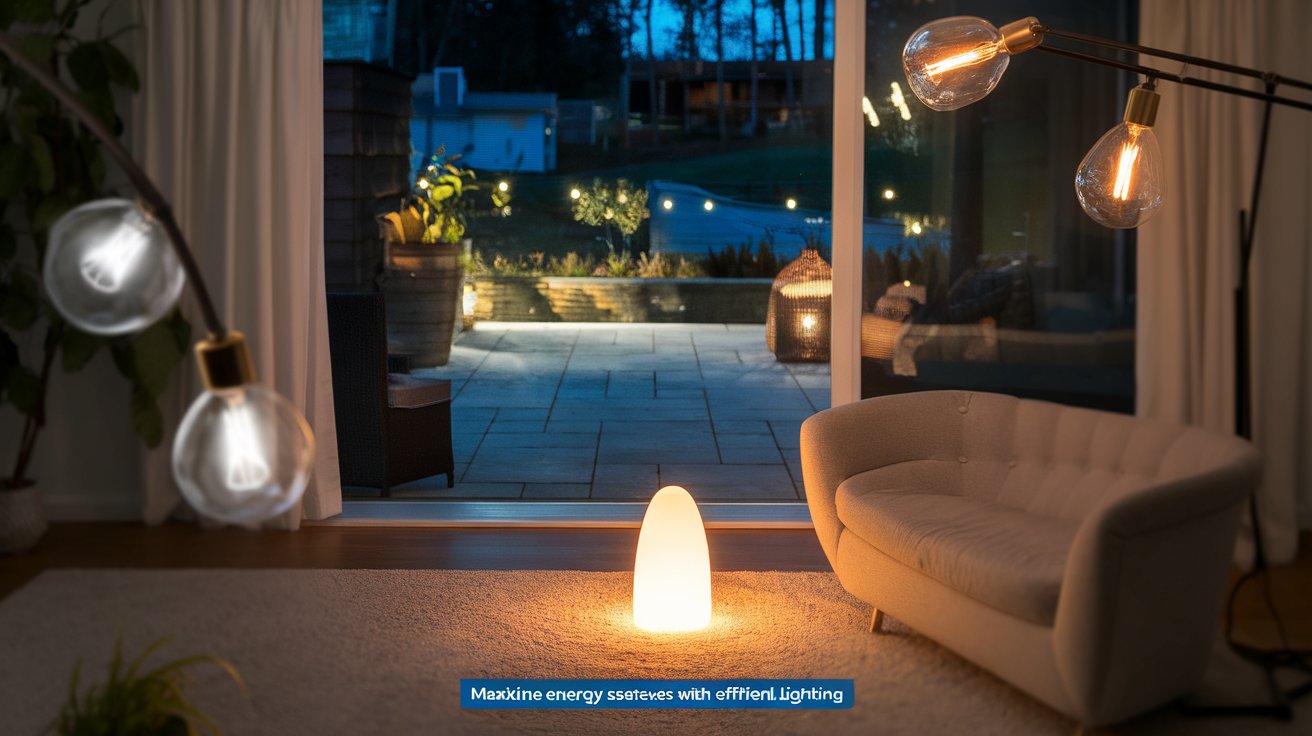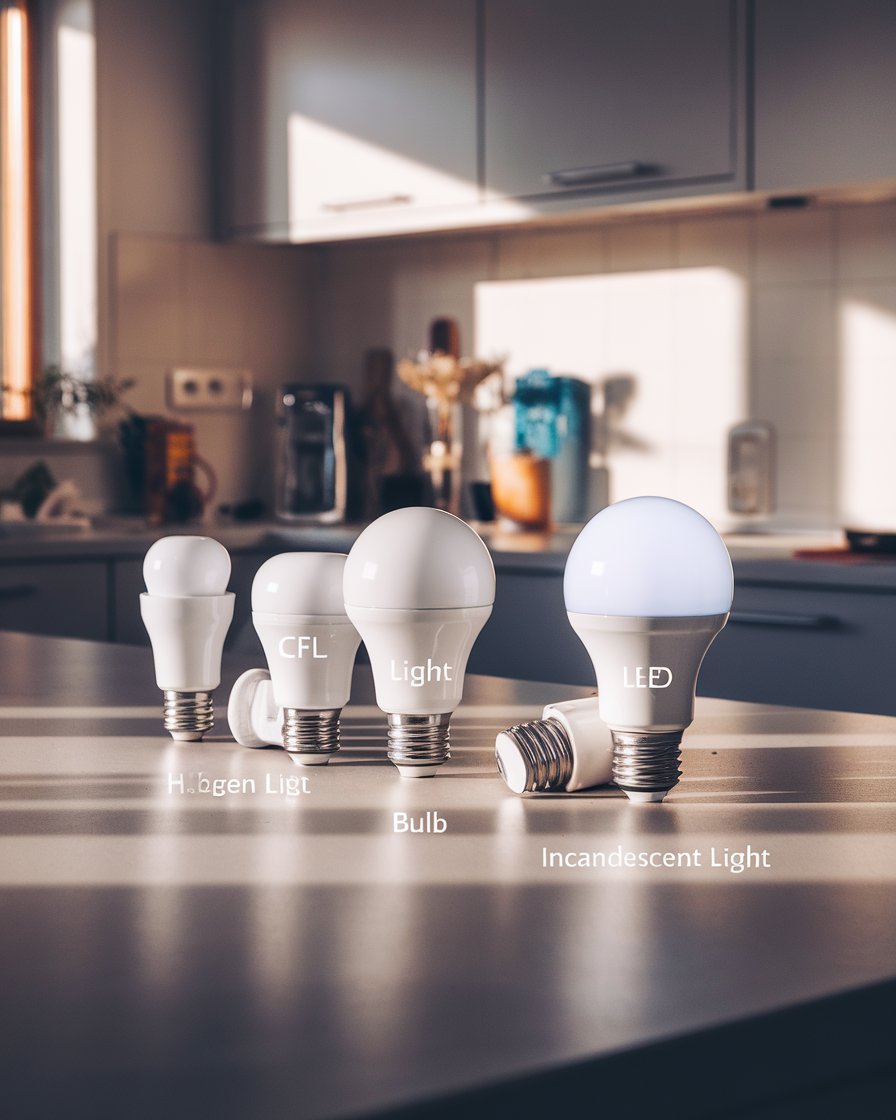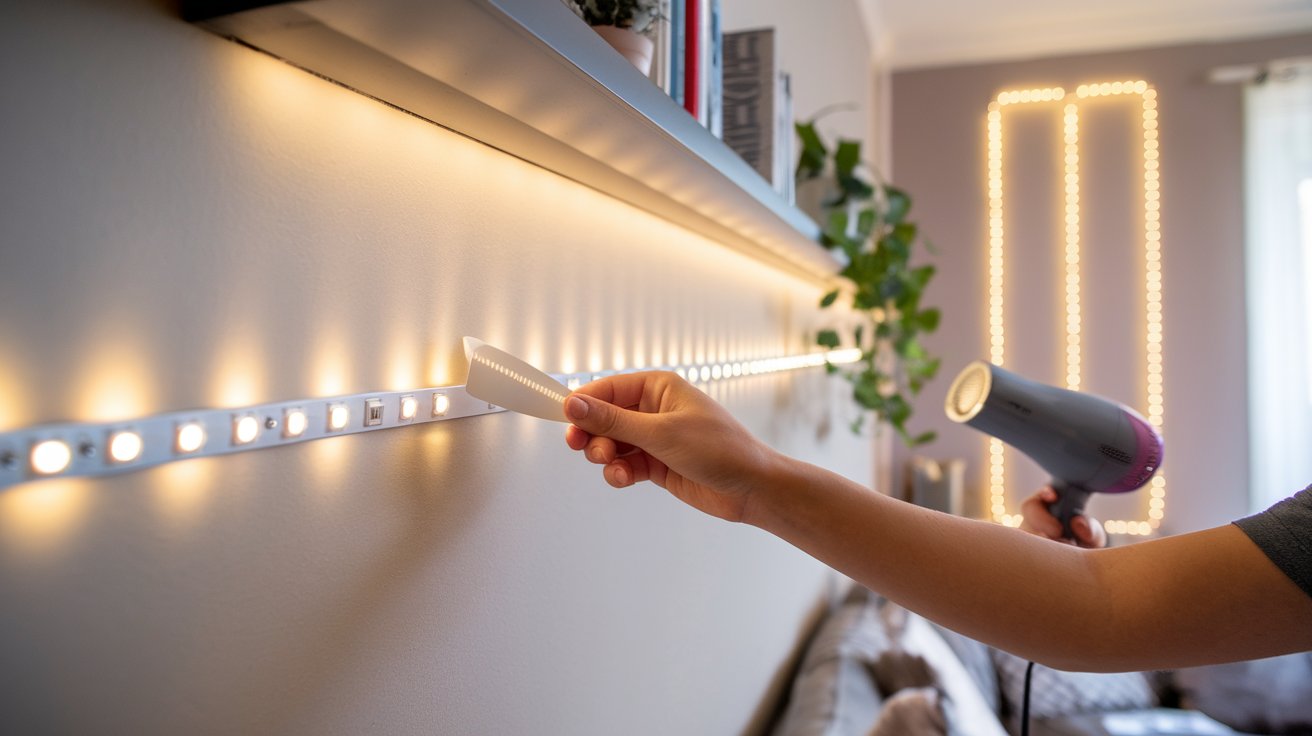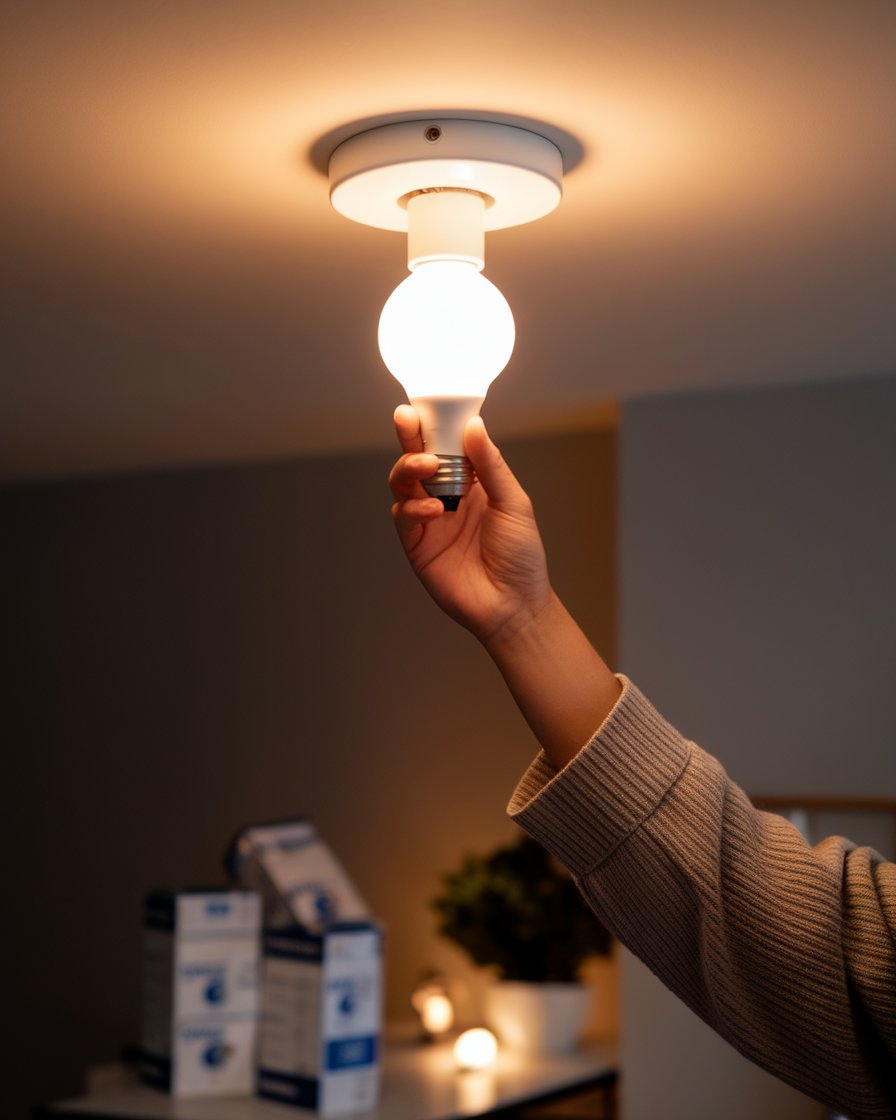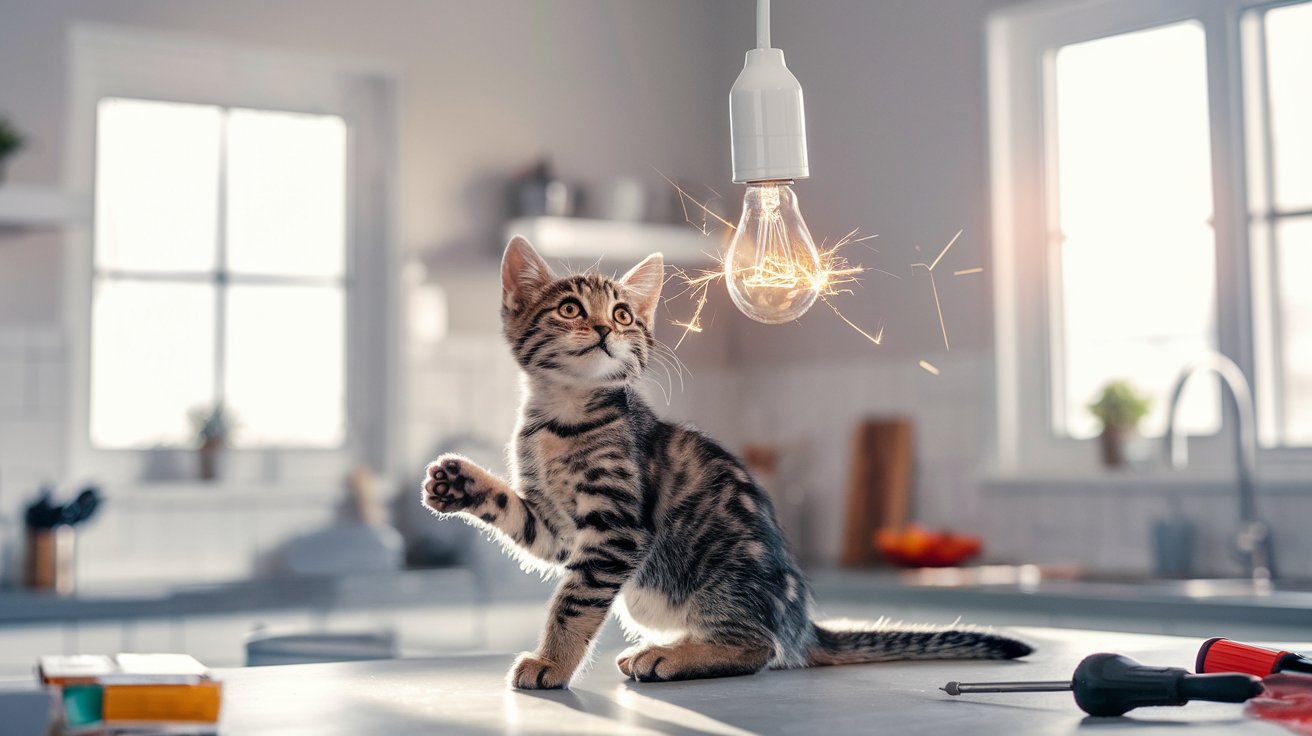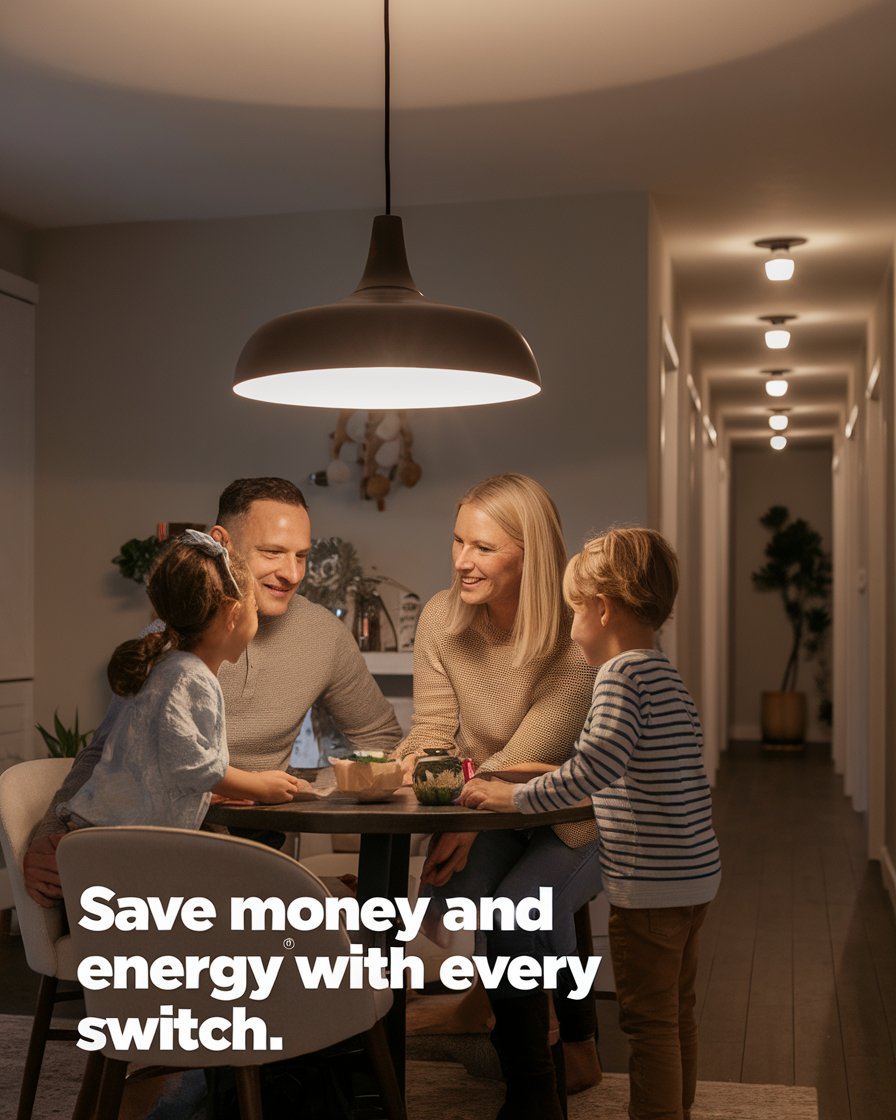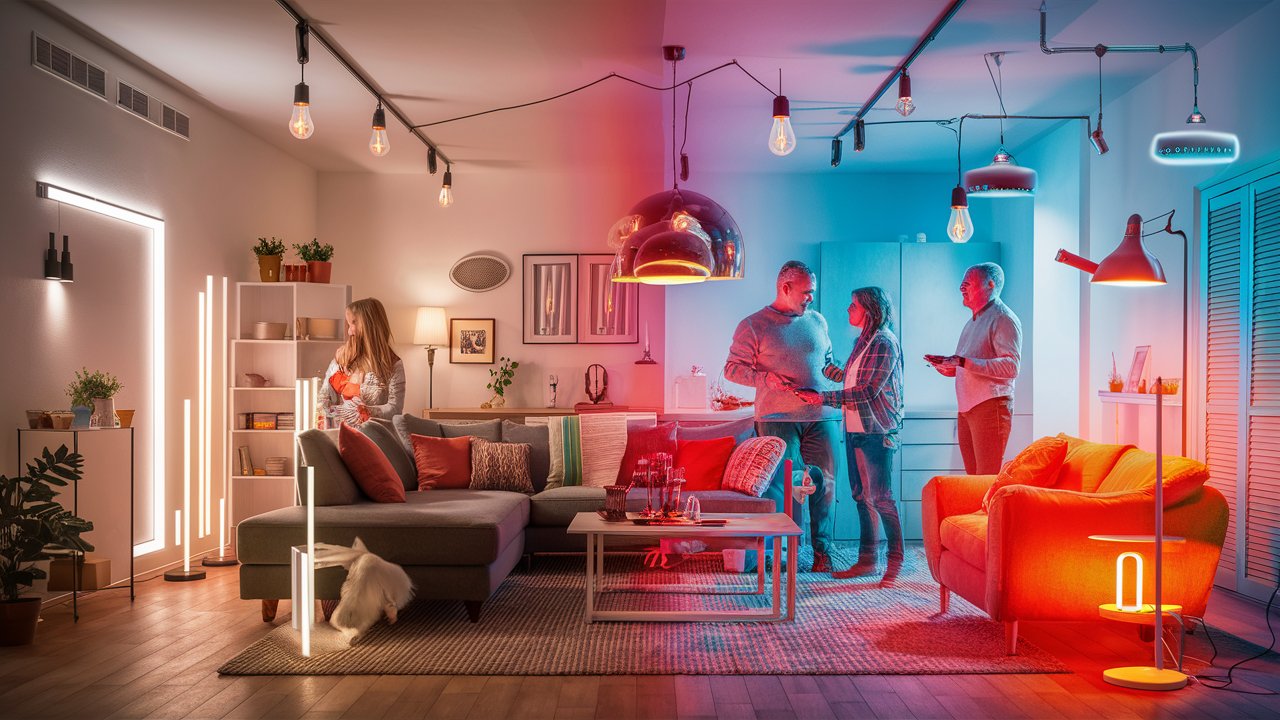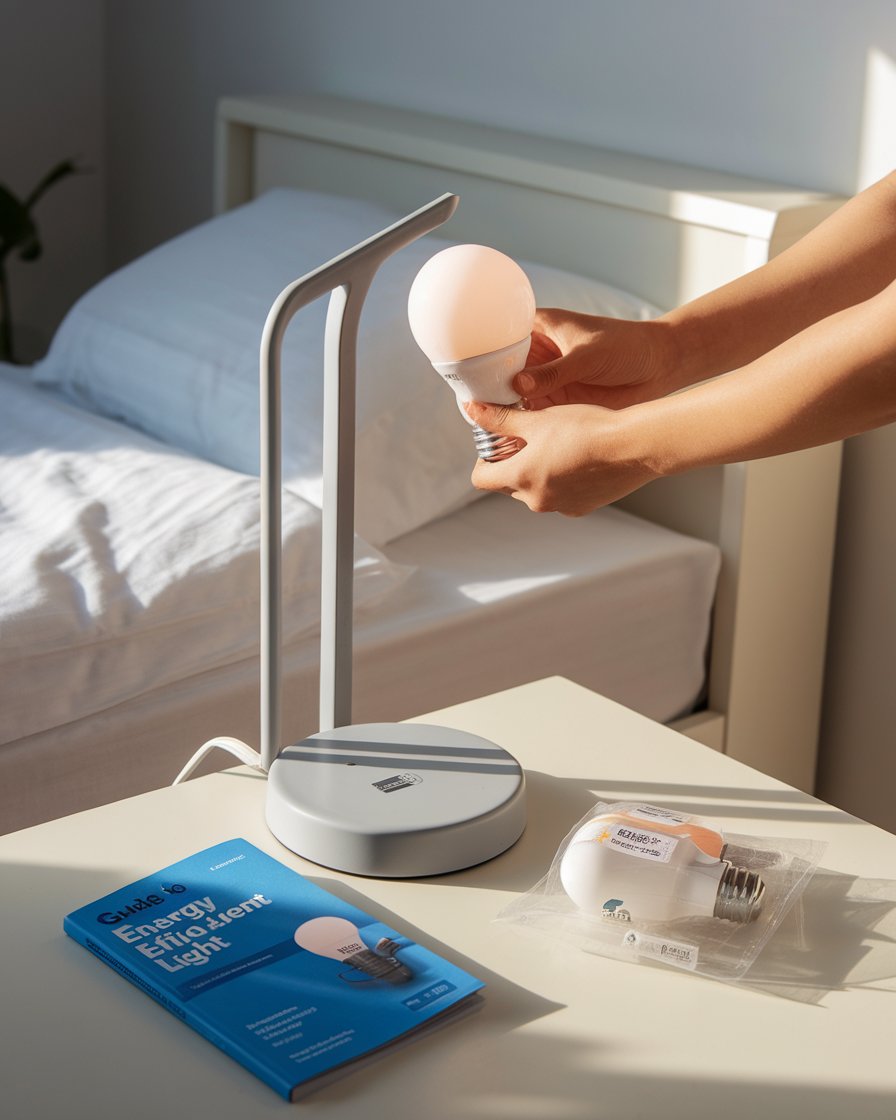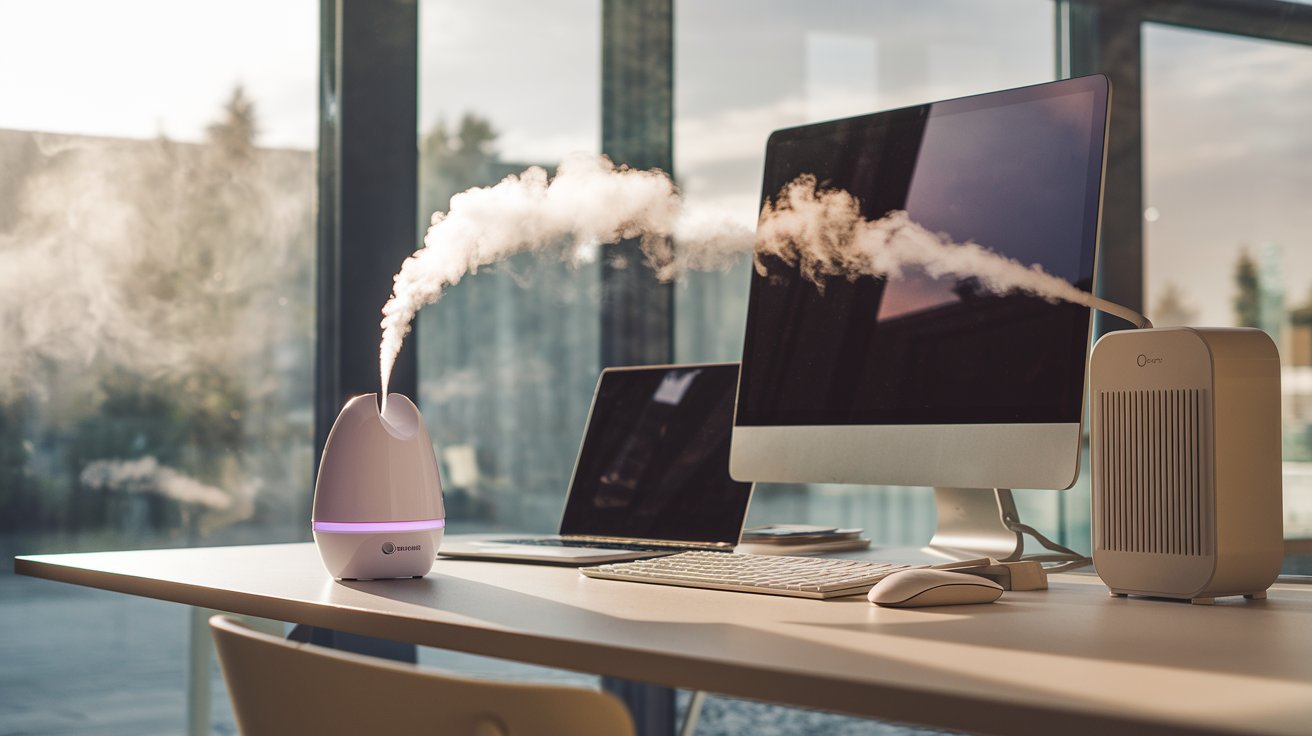Introduction
Choosing the right light bulb is more than just about brightness; it plays a crucial role in both energy consumption and long-term savings. With a range of energy-efficient light bulbs available today, like LED and CFL options, it’s easier than ever to reduce your energy usage. ENERGY STAR® certified bulbs, especially LED bulbs, offer the best energy-efficient light options, consuming far less power than traditional incandescent bulbs. These light-emitting diode (LED) bulbs not only lower your energy bills but also last much longer, making them a cost-effective solution. Understanding these different types of bulbs can help you make smarter choices for your home or business.
Switching to energy-efficient light bulbs has far-reaching benefits, from reducing your electricity costs to lessening environmental impact. Compact fluorescent light (CFL) bulbs, although more energy-efficient than incandescent bulbs, are still not as efficient as LEDs. By following a guide to energy-efficient light options, you can maximize savings, reduce greenhouse gas emissions, and choose the best lighting solutions for any space.
Key Takeaways
- LED bulbs are the most energy-efficient option, using significantly less power while producing more light than incandescent bulbs.
- CFL bulbs are more energy-efficient than traditional incandescent bulbs, but they still fall short when compared to LEDs.
- The choice between lumens and watts is crucial for selecting an energy-efficient light, with LEDs offering higher lumens per watt.
- Choosing the right color temperature, measured in Kelvin, can enhance the ambiance of a space, whether warm or cool light is preferred.
- ENERGY STAR® certified bulbs, especially LEDs, help reduce both electricity costs and environmental impact by consuming less energy.
- Proper installation and maintenance of LED bulbs maximize energy savings and extend their lifespan, ensuring long-term efficiency.
Understanding Different Types of Energy Efficient Light Bulbs
Choosing the right type of light bulb can have a significant impact on both your energy consumption and overall lighting quality. With so many options available, it’s essential to understand how different light bulbs operate and which ones offer the best energy efficiency. Energy star certified options, such as light emitting diode (LED) bulbs, are among the most energy-efficient choices. They provide brighter light while consuming less power than traditional incandescent light bulbs. Even CFL light bulbs are a viable alternative for those looking for a more budget-friendly option. The best energy-efficient light bulbs, like LEDs, not only save energy but also last significantly longer than traditional incandescent bulbs, reducing costs in the long run. Whether you’re lighting up your home or workspace, understanding the energy efficiency of a light can help you make informed decisions that save both energy and money.
Key Factors to Consider When Choosing Energy-Efficient Light Bulbs
1. Understand Lumens vs. Watts
When selecting energy-efficient light bulbs, it’s essential to understand the difference between lumens and watts. Lumens measure the brightness of a bulb, while watts indicate energy consumption. Energy-efficient bulbs like LEDs use fewer watts to produce more lumens compared to traditional incandescent bulbs, making them a better choice for reducing energy usage while maintaining brightness.
2. Choose the Right Bulb Type for Your Space
LED bulbs are widely considered the most energy-efficient option, consuming up to 90% less energy than incandescent bulbs. CFL bulbs are also energy-efficient but slightly less so compared to LEDs. For spaces that require long-lasting, bright lighting, LEDs are ideal, while CFLs may work well in lower-use areas.
3. Check for ENERGY STAR® Certification
For guaranteed energy savings, always look for the ENERGY STAR® label. ENERGY STAR® certified bulbs meet strict energy efficiency guidelines set by the U.S. Department of Energy. These bulbs use 70-90% less energy than traditional options, offering long-term savings on electricity bills and lowering your environmental impact.
4. Pay Attention to Color Temperature
The color temperature of a light bulb, measured in Kelvin (K), affects the ambiance of a room. Warmer light (around 2700K-3000K) is great for cozy spaces like living rooms, while cooler light (4000K-5000K) is ideal for kitchens or workspaces. Choosing the right color temperature enhances both comfort and energy efficiency in your home.
5. Consider Longevity and Durability
LED bulbs not only consume less energy but also last significantly longer than incandescent or CFL bulbs. Some LED bulbs can last up to 25,000 hours, which means fewer replacements and lower long-term costs. This durability makes them a more sustainable option for energy-efficient lighting.
6. Optimize Lighting Controls
To maximize the benefits of energy-efficient bulbs, consider using lighting controls such as dimmers, timers, or motion sensors. These tools allow you to manage when and how your lights are used, further reducing energy consumption and optimizing your home’s lighting system.
LED Bulbs: The Most Energy-Efficient Option
When it comes to energy-efficient lighting, LED bulbs stand out as the top choice. These light-emitting diode (LED) bulbs use far less energy than incandescent bulbs, making them ideal for anyone looking to reduce their energy usage. LED bulbs produce more lumens per watt, meaning they give off more light while consuming less power. Plus, they last significantly longer, which means you won’t need to replace them as often. LEDs are also better for the environment, as they contain no hazardous materials like mercury, which is commonly found in CFL bulbs. For optimal energy savings and bright light, LED bulbs are a smart investment.
Comparison of Energy Efficiency in CFL and Incandescent Bulbs
CFL (compact fluorescent lamp) bulbs are another energy-efficient option, though they don’t match the efficiency of LED bulbs. CFLs use around 75% less energy than traditional incandescent bulbs, but a portion of that energy is still lost as heat. This inefficiency makes them less ideal than LEDs in terms of overall energy savings. Incandescent bulbs, on the other hand, are the least efficient option, consuming far more energy while providing less light. Switching from incandescent or CFL bulbs to LEDs can help significantly lower your energy bills, as LED bulbs typically last up to 25 times longer than incandescent bulbs, optimizing your energy use.
Factors to Consider When Choosing LED Light Bulbs
Choosing the right light bulb involves more than simply picking a bright one; there are several factors to consider to ensure you get the most energy-efficient and suitable option for your space. Energy-efficient light bulbs like LEDs and CFLs not only reduce energy costs but also have a longer lifespan compared to traditional incandescent bulbs. It’s essential to explore a guide to energy efficient light options, as energy saving light bulbs are not only efficient than incandescent bulbs but also help improve overall comfort. Additionally, the efficiency of a light bulb depends on how much light it produces versus how much power it consumes. This, along with the bulb’s color temperature, can dramatically affect the ambiance of a room, making it vital to choose wisely for both efficiency and comfort. Opting for led and cfl bulbs ensures you save energy and money in the long term.
Case Study: Energy Savings with LED Bulbs in a Large-Scale Lighting Upgrade
Cree Lighting, a leader in LED technology, conducted a major lighting upgrade at its campus in Durham, North Carolina. The project involved replacing traditional incandescent and fluorescent lighting with energy-efficient LED bulbs across both indoor and outdoor spaces. This switch resulted in a remarkable 30-80% reduction in energy usage compared to the older lighting systems. The LED bulbs not only cut down on electricity consumption but also reduced maintenance costs due to their longer lifespan, lasting up to 25 times longer than incandescent bulbs.
The project demonstrated how switching to energy-efficient LED lighting can significantly lower operational costs and improve energy sustainability. By making this shift, Cree was able to save substantial amounts on energy bills while enhancing the overall lighting quality. This case study shows the practical benefits of LEDs for both large-scale operations and home lighting, where long-term savings and environmental impact are critical considerations.
Lumens vs. Watts: Understanding Brightness and Energy Consumption
When selecting light bulbs, it’s crucial to understand the difference between lumens and watts. Watts measure the energy consumption of a bulb, while lumens indicate the amount of light it produces. In the past, consumers chose bulbs based on wattage, but energy-efficient light bulb options, like LEDs, use far fewer watts while providing the same or even more lumens compared to traditional incandescent bulbs. For example, a 10-watt LED light bulb can emit the same amount of light as a 60-watt incandescent bulb. This shift to focusing on lumens allows consumers to reduce their energy consumption without sacrificing brightness, helping to lower energy bills and promote environmental sustainability.
Color Temperature: Choosing the Right Light for Your Space
Color temperature is another key factor in selecting the best light bulb for your home. Measured in Kelvin (K), it dictates the appearance and mood of the light. For spaces where you want a cozy and inviting feel, such as living rooms or bedrooms, bulbs with a color temperature around 3000K to 3500K produce a warm, yellowish light. On the other hand, cooler, bluish lights (5000K and above) are ideal for workspaces or kitchens where bright light is necessary for concentration. Whether you’re looking for energy savings or ambiance enhancement, matching the bulb’s color temperature to the function of the room ensures that your space feels just right.
Benefits of Upgrading to ENERGY STAR® LED Bulbs
Switching to ENERGY STAR® LED bulbs offers numerous benefits that extend beyond improved lighting. These bulbs come with energy star certification, ensuring they meet strict standards for terms of energy efficiency. By switching, you not only reduce energy usage but also take advantage of one of the best ways to save energy in your home or business. LED bulbs also last significantly longer than incandescent bulbs and consume far less power. Over time, this upgrade results in reduced light bulb energy consumption, leading to lower utility bills and a positive environmental impact. Additionally, standard LED bulbs are designed to provide bright, consistent light while using the least energy, compared to older technologies like halogen bulbs or edison bulbs. By making this smart switch, you’ll contribute to energy conservation and save money on energy costs in the long run.
Cost Savings and Longevity of LED Bulbs
One of the primary reasons to switch to ENERGY STAR® LED bulbs is the cost savings. These bulbs consume up to 90% less energy than traditional incandescent bulbs, which means you’ll notice a difference in your energy bills almost immediately. They also last significantly longer—up to 15 times longer than a standard bulb. For example, if a single LED bulb is used in place of an incandescent bulb, you could save approximately $81.68 over the bulb’s lifetime. While LED bulbs may come with a slightly higher upfront cost, their long lifespan and energy efficiency make them a financially sound investment over time.
Environmental Impact of Using Energy-Efficient Lighting
Switching to energy-efficient lighting, particularly ENERGY STAR® LED bulbs, has a direct positive impact on the environment. These bulbs are designed to meet strict efficiency standards, meaning they produce less greenhouse gas emissions and consume fewer resources over their lifetime. The durability of LED bulbs reduces waste, as fewer bulbs need to be replaced compared to incandescent options. Additionally, their reduced energy consumption translates to lower overall energy use, which helps in the fight against climate change. By opting for ENERGY STAR® certified bulbs, you’re not just saving money, but also contributing to a more sustainable and eco-friendly future.
Energy efficiency not only saves businesses and consumers money, but it also reduces pollution by cutting energy use.” – Jeff Van Drew
How to Properly Install and Use Energy-Efficient Bulbs
Installing and using energy-efficient light bulbs, such as LEDs, can greatly reduce energy consumption and lower electricity costs. However, to get the most out of these bulbs, it’s essential to follow proper installation and maintenance practices. Energy-efficient light bulbs are designed to offer bright, efficient light while using less energy than traditional incandescent bulbs. Whether you’re upgrading your home or business lighting, using LED or CFL bulbs ensures that you maximize energy savings and improve the overall quality of light in your space. Proper installation and regular maintenance will help extend the lifespan of these energy-saving light bulbs, allowing you to enjoy their benefits for many years.
Tips for Installing LED Bulbs for Maximum Efficiency
To ensure you get the best performance from your LED bulbs, it’s important to install them correctly. Start by checking the compatibility of the fixture with LED bulbs, ensuring that it’s rated for energy-efficient light sources. LED bulbs consume less energy than incandescent bulbs, so matching the fixture’s wattage requirements is key to preventing electrical issues. Once installed, test the bulb to confirm it works properly. If you notice flickering or dimming, there may be a compatibility problem. Regularly monitor the performance of your bulbs and consider upgrading your fixtures if necessary to get the full energy-saving benefits. Proper installation will optimize energy efficiency and extend the life of your bulbs.
Maintaining and Cleaning LED Bulbs for Optimal Performance
Maintaining your LED bulbs is just as important as proper installation for ensuring long-lasting efficiency. Over time, dust and debris can accumulate on the bulbs, reducing their brightness and energy efficiency. To prevent this, periodically clean your LED bulbs with a soft cloth or brush, carefully removing any dirt. Avoid using harsh chemicals or water, as this can damage the bulb. Regular cleaning not only preserves the quality of light but also helps the bulbs last longer. By taking care of your energy-efficient light bulbs, you’ll continue to enjoy bright, cost-effective lighting while minimizing the need for replacements.
Conclusion
Upgrading to energy-efficient light bulbs, such as LED and CFL options, is a smart investment that benefits both your wallet and the environment. ENERGY STAR® certified bulbs, especially LED light bulbs, offer significantly reduced energy consumption compared to traditional incandescent bulbs. These efficient light bulbs can lower your energy bills, provide brighter light, and last much longer. By understanding key factors like lumens, wattage, and color temperature, you can choose the best energy-saving light bulbs for your space, optimizing both comfort and efficiency.
Switching to LED bulbs doesn’t just cut costs; it also helps reduce greenhouse gas emissions and lessens waste by using long-lasting products. Whether you’re using new LED bulbs or compact fluorescent light bulbs, selecting energy-efficient lighting contributes to sustainability while following energy efficiency guidelines from the Department of Energy. By making this shift, you’ll not only enjoy better lighting but also play a role in promoting a cleaner, more energy-conscious future.

